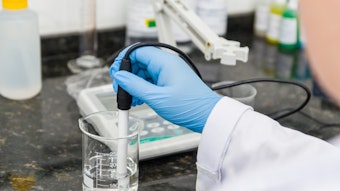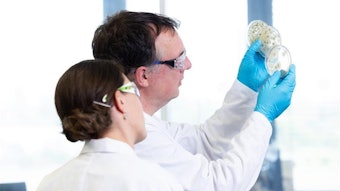Since 2004, reports in the media and on the Internet have been made directing consumers to avoid parabens in personal care products, while a virtue is often made of products being i. Many of these reports are based on a 2004 study by Darbre et al. claiming to have detected parabens in human breast cancer tissue.1 That study was prompted by a 1998 study by Routledge et al. that found parabens to have oestrogenic activity.2 Papers have been published by this author regarding the validity of these two studies3-5 and while the full detail of those papers will not be repeated in this article, a short summary and discussion of other paraben studies is offered here.
In a recent online discussion about parabensa, one commentator suggested that the controversy surrounding the material has moved beyond scientific debate into the realm of consumer concern. This implies that scientific debate is no longer worthwhile. While it is difficult to change the perception of non-scientific consumers, this does not mean the scientific debate should cease; the facts do not disappear because a wealth of misinformation surrounds the issue.
Misinformation
Some of the worst offenders for promoting incorrect information about parabens are cosmetic manufacturers selling “natural” personal care products. Perhaps these manufacturers are unaware that methyl-, ethyl- and propylparaben exist in nature. While it cannot be claimed that their presence in nature guarantees their safety, parabens have been detected in various plant and animal species such as barley, strawberries, blackcurrants, peaches, carrots and Dytiscus marginalis (yellow beetle). Methylparaben has also been detected in the vaginal secretions of female dogs in oestrus.
As noted, negative statements about parabens and other “toxic” chemicals are made on the Internet, and these are often misleading and incorrect. One mistake that is commonly made is the grouping of parabens together as a single entity—such as in the statement, “Parabens are oestrogenic.” As is the case with the physical and chemical properties of parabens, there are differences in toxicological properties across the homologous series. For example, Routledge et al. found no oestrogenic activity for methylparaben in vivo in his 1998 study,2 and the activity of butylparaben was found to be 100,000 times weaker than oestradiol, the benchmark for measuring oestrogenic activity.
It also could be questioned whether such weak activity justifies the label “oestrogenic” for butylparaben, especially since this weak effect was elicited by a dose approximately 4,000 times greater than the level of exposure during normal use. The level of oestrogenic activity of phytoestrogens ingested daily is approximately 2,000 times weaker than oestradiol. It is also interesting to note that while the safety of butylparaben is called into question, little concern exists over phytoestrogens, which are more oestrogenic than butylparaben, being ingested daily.
When Routledge et al. published this study, concern over butylparaben was expressed briefly but faded, possibly due to the weak effect observed. However, the publication of data by Darbre et al. claiming that intact parabens were detected in human breast cancer tissue2 reignited concerns due to the known connection between oestrogen and cancer. Then Routledge’s work gained more interest.
Critiquing the Breast Cancer Connection
Several points of controversy are connected with Darbre’s work on breast cancer tissue, and many aspects of this study have been criticized.5, 6 Most of this criticism has focused on the questionable methodology employed, in addition to the paraben detection in all the blank controls without emphasis on whether parabens were present in the tissues. The paraben content in the blank controls was dismissed by researchers as contamination from cleaning products containing parabens on the glassware used.
One problem with this theory is that parabens are not permitted for use in the type of cleaning product used—certainly not within the European Union (EU). Parabens are not supported or listed in the EU under the auspices of the Biocidal Products Directive, which covers all preservative use with the exceptions of food, medicines and personal care. It is much more likely that the controls were contaminated by skin contact from the laboratory workers.
Regardless of contamination source, if the controls were contaminated to any extent, logic would dictate that the tissues must be similarly contaminated. While this suggestion does not automatically mean that parabens were not already present in the tissues, it does throw significant doubt on the claim made in the study. This possibility can be derived from the lack of statistical difference between the paraben concentrations in the tissues and the controls. In addition, there was a lack of statistical difference between the ratios of the five parabens detected. Therefore, the concentrations of each of the individual parabens statistically were the same in the tissues and the controls. In fact, one of the blank controls contained a higher total concentration of parabens than 12 of the tissue samples.
A recent study of the enzymatic hydrolysis of parabens by human skin7 found that approximately 30% of the applied dose of methylparaben was broken down after 25 hr, compared to approximately 5% for each of the other esters. If the parabens detected in the breast cancer tissue had passed through the skin, the ratio of the esters would have been significantly different than that of the controls. Indeed, further enzymatic hydrolysis-again, disproportionate amongst the different esters-would have occurred after passage through the skin, and the paraben ratios would have been altered even more by the time the compounds reached the breast cancer tissue. This was not the case, which further supports the possibility that the tissue samples did not originally contain parabens.
Additionally, the ratios of the parabens detected corresponded closely to the typical relative use concentrations of the five esters, strengthening the probability of their presence solely as contaminants. The assumption that parabens were present in the tissues is the cornerstone of a large body of subsequent work attempting to discover a link between parabens and cancer but, based on serious doubts of the validity of Darbre’s study, any link is less likely to be found than currently may be assumed.
Another factor to consider is that oestrogenic activity does not necessarily mean that the compound mimics oestrogen. Later work by Pugazhendi, co-authored by Darbre,8 showed major differences in the effects of parabens and oestradiol on gene expression. If the effect of parabens on global gene expression differs from that of oestradiol, then the risk of the same toxicological effect, i.e., the link between oestradiol and cancer, is reduced accordingly. Therefore, the likelihood of a link between parabens and cancer is reduced.
Fish Assay Debate
A paper published by a Danish group,9 while not gaining the same level of publicity as Darbre’s work, is often cited in studies on parabens, as it found that ethylparaben, propylparaben and butylparaben were oestrogenic in an in vivo fish assay. These parabens were determined to be oestrogenic at a dose interval of 100–300 mg/kg body weight. While this may sound alarming, it should be noted that the authors injected the fish with parabens. Moreover, the dose interval is equivalent to 0.01–0.03%, and to be exposed to these concentrations of parabens in their normal environment, fish would have to be swimming in 250,000 kg of a shampoo containing 0.3% parabens in an area the volume of an Olympic-sized swimming pool, which is 2,500,000 L.
In most aquatic environments, paraben concentration would most likely never exceed low parts per trillion, as parabens are readily biodegradable. In addition, there is no evidence of bioaccumulation of parabens in fish, so the value of this study is open to question. This study is cited along with Routledge’s work to highlight the importance of context when assessing the results of toxicological studies. It is not enough to consider only the end result. If this were the case, it would be possible to find an adverse toxicological effect for every chemical known to man, given the right (or wrong) route of administration and a sufficiently high dose level.
SCCS and Parabens
Recent studies in the latest opinion on parabens by the EU’s Scientific Committee on Consumer Safety (SCCS), formerly the Scientific Committee on Consumer Products,10 describe more relevant work. The current SCCS position is that methylparaben and ethylparaben are considered safe for use at the current permitted concentrations but more data is required on propylparaben and butylparaben. The industry is presently completing pharmacokinetic studies using oral, dermal and subcutaneous dosing in addition to a skin metabolism study to address the outstanding points of concern.
The results of these studies will be considered by the SCCS and a final opinion will be issued in due course. Until the final opinion is published, the situation in the EU remains that methylparaben, ethylparaben, propylparaben, isopropyloparaben, butylparaben and isobutylparaben are considered to be safe for use in cosmetics at concentrations less than 0.8% total parabens, where no single ester exceeds 0.4% (expressed as 4-hydroxybenzoic acid). Of the five paraben esters, methylparaben and propylparaben are, by far, the most widely used in personal care applications. And while some questions remain regarding the safety of the higher esters until these results are available, the weight of scientific evidence provides a convincing case for the continued use of methylparaben and ethylparaben.
The results of an additional study requested by the SCCS, while not yet formally published, were presented at the Sustainable Cosmetics Conference of the Scandanavian Society of Cosmetic Chemists (SCANCOS) in Malmo, Sweden, which took place on Nov. 5–6, 2009. The presentation by COLIPA scientific spokesman Florian Schellauf found butylparaben to be largely metabolized before entering the systemic circulation. This means that only trace amounts of the substance are likely to be present in the bloodstream after topical application. This research questions the claim that parabens absorb into the skin and accumulate in the body, possibly causing cancer. This information also confirms the earlier findings of Bando,11 who had determined that only 4% of the applied dose of butylparaben passed through the skin intact.
Conclusions
Both Schellauf’s presentation and Bando’s research support the contention of many scientists in the cosmetics industry that the dangers of parabens in general, specifically butylparaben, have been exaggerated. They also assist formulators in defending their position, should they wish to continue formulating with parabens. This author has yet to find a credible, substantiated study that has identified any unacceptable risk from parabens; therefore, a sustainable argument exists for the continued use of parabens as preservatives in cosmetics.
References
- PD Darbre, A Aljarrah, WR Miller, NG Coldham, MJ Sauer and GS Pope, Concentrations of parabens in human breast tumours, J Appl Toxicol 24 5–13 (2004)
- EJ Routledge, J Parker, J Odum, J Ashby and JP Sumpter, Some alkyl hydroxyl benzoate preservatives (parabens) are estrogenic, Tox Appl Pharm 153 12-19 (1998)
- D Godfrey, Re: Assessment of principal parabens used in cosmetics after their passage through human epidermis-dermis layers (ex vivo study), Exp Dermatology 17, 700–701 (2008)
- D Godfrey, Re: Construction of simplified models to simulate oestrogenic disruptions by esters of 4-hydroxybenzoic acid (parabens), Biophysical Chem, 138, 63–64 (2008)
- C Flower, Re: Concentrations of parabens in human breast tumours, J Appl Toxicol, 24, 304–305 (2004)
- R Golden, J Gandy and G Vollmer, A Review of the endocrine activity of parabens and implications for potential risks to human health, Critical Reviews Toxicol 35 435–458 (2005)
- C Jewell, JJ Prusakiewicz, C Ackermann, NA Payne, G Fate, R Voorman and FM Williams, Hydrolysis of a series of parabens by skin microsomes and cytosol from human and minipigs and I whole skin in short-term culture, Tox Appl Pharmacol 225 221–228 (2007)
- D Pugazhendi, AJ Sadler and PD Darbre, Comparison of the global gene expression profiles produced by methylparaben, n-butylparaben and 17b–oestradiol in MCF7 human breast cancer cells, J Appl Toxicol 27, 67–77 (2006)
- KL Pedersen, SN Pedersen, LB Christiansen, B Korsgaard and P and Bjerregaard, The preservatives ethyl-, propyl- and butylparaben are oestrogenic in an in vivo fish assay, Pharm Toxicol, 86, 110–113 (2000)
- Scientific Committee on Consumer Safety, formerly the Scientific Committee on Consumer Products, Opinion on parabens (Jun 24, 2008)
- H Bando, S Mori, F Yamashita, Y Takakura and M Hashida, Effects of skin metabolism on percutaneous penetration of lipophilic drugs, J Pharmaceut Sci 86, 759–761 (1997)










